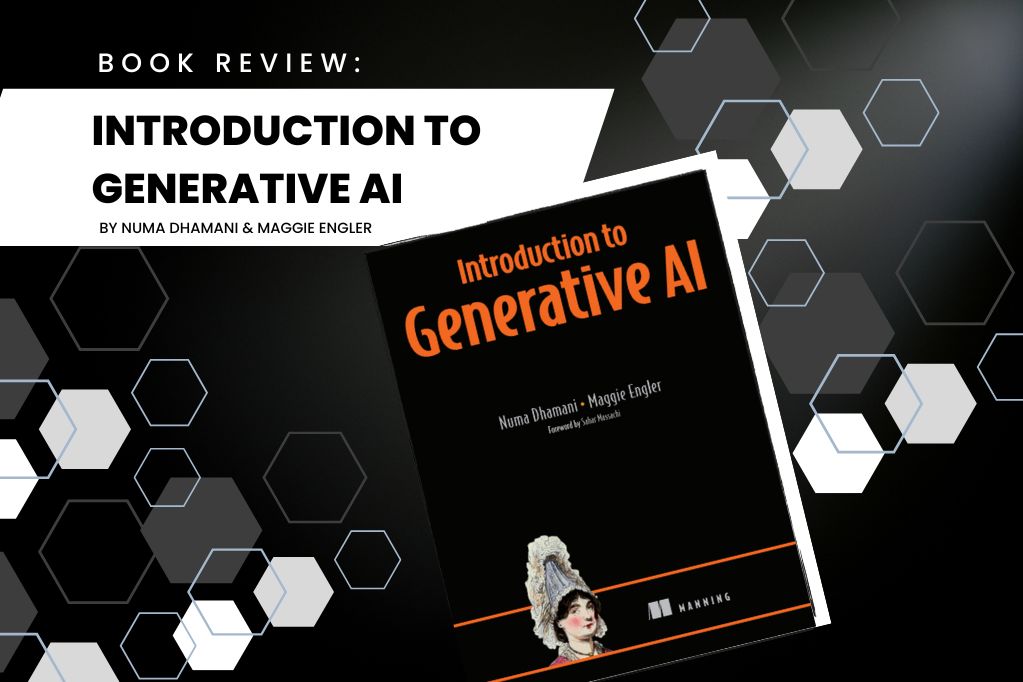Table of Contents
ToggleAs the world of artificial intelligence (AI) rapidly grows in popularity and notoriety, “Introduction to Generative AI” by Numa Dhamani and Maggie Engler serves as a significant beacon for beginners and experts alike. This book provides a broad and extensive overview of Generative AI, with a particular focus on Large Language Models (LLMs), in which Dhamani and Engler unpack its complexities in an accessible manner. The authors’ intent to educate, create awareness, and advocate for the ethical and responsible use of AI is clear and compelling.
In this review, we’ll break down the key elements of the book and highlight some of its strengths and weaknesses.
Informing to Understand
At the core, the book dives into the intricacies of what makes LLMs tick — from the pre-training phase to the exploration of web data and to the algorithms that contribute to the output. Notably, the coverage of emergent abilities, like zero-shot and few-shot learning, alongside considerations, like potential inclusion of Personally Identifiable Information (PII), stereotypes, or derogatory data, provides a balanced view.
A Timeline of Breakthrough Events in NLP
Warren McCullough and Walter Pitts, a neuropsychologist and mathematician respectively, develop the first neural network models.
Alan Turing proposes an "imitation game" as a test of machine intelligence, which will come to be referred to as the Turing test.
Joseph Weizenbaum releases ELIZA, a therapist chatbot.
Symbolic systems are most popular in NLP, while reduced funding and
few research breakthroughs mark the period later known as an "Al winter.
Statistical models begin to set new benchmarks on NLP tasks, and the first deep, recursive neural networks are trained.
Google Translate becomes the first commercially successful NLP system.
Google researchers introduce word2vec, the first model to produce word embeddings, which will be widely reused for encoding words for NLP tasks.
The attention mechanism is conceptualized.
Google Brain researchers introduce the Transformer architecture.
OpenAl releases GPT-1, their first Generative Pre-trained Transformer model.
OpenAl releases GPT-2 after a months-long delay over concerns about misuse; Google releases BERT, another large Transformer model that will also be used widely to create word embeddings or representations.
OpenAl releases GPT-3.
OpenAl releases ChatGPT, which achieves overnight popularity.
Reference: “Introduction to Generative AI” by Numa Dhamani and Maggie Engler, p.10, Figure 1.3
Capabilities and Applications
From language modeling and content generation to coding and logical reasoning, Dhamani and Engler showcase the profound capabilities of LLMs. Real-world examples, including OpenAI’s ChatGPT and GitHub’s Copilot, are used to illustrate the stark realities of AI in action, providing readers a tangible connection to abstract concepts.
They also provide more personal applications of LLMs including Xiaolce, Replika, and Character.AI. These platforms facilitate interactions between humans and AI for companionship, romance, or entertainment, underscoring the importance of balancing the appeal of AI companionship with rigorous data protection measures.
Caution on the Data
To address the ethical dimension, the authors highlight the dual-edged sword of using open-source web data, which is potentially embedded with biases and/or hallucinations that lead to stereotypes or misinformation, respectively. With mechanisms, like post-processing detection algorithms and reinforcement learning from human feedback, the book does not shy away from discussing AI’s vulnerabilities and limitations.
The discussion extends into the implications of bias, hallucinations, and sustainability. They provide practical examples, including the precautionary tale of NEDA’s AI-driven helpline, Tessa. There’s an urge towards responsible AI governance, emphasizing the need for an independent body of experts to leverage its use ethically and to the broader population’s advantage.
Manning Publications offers a platform that encourages in-depth discussions about Generative AI, focusing on how AI applications can improve both the workplace and our daily lives, all while prioritizing ethical and responsible usage. Engage directly with the authors by joining the lively discussions in their liveBook. Learn more here.
Analysis
For curious readers, the “Introduction of Generative AI” has the following key highlights and considerations.
Highlights:
- The book stands out for making the complex domain of LLMs accessible to a wide audience by providing an array of real-life use cases.
- It’s a clear and resonant call for responsible innovation by providing pathways towards ethical governance in AI development and deployment.
Considerations:
- Those seeking in-depth technical knowledge or how-to guides on developing LLM may find the scope limiting.
- Its high-level overview prioritizes breadth over depth, potentially leaving technical enthusiasts desiring more granularity.
Final Thoughts
“Introduction to Generative AI” serves as a fundamental guide that effectively unravels the complexities of a complicated topic. Dhamani and Engler have produced work that is not just educational but also a call to action for ethical responsibility in the AI arena. It invites readers on all levels to ponder not just the capabilities but the broader implications of deploying Generative AI in everyday applications.
While the book’s treatment remains high-level, its real accomplishment is in spotlighting the myriad considerations — technical, ethical, and environmental — that come with integrating LLMs into our digital ecosystems. For anyone interested in understanding Generative AI’s landscape without getting lost in the technical weeds, this book offers a valuable and insightful starting point.
Let’s continue the conversation. Has your organization taken steps to establish internal controls or guidance regarding the use of LLMs, or any AI technology, in your organization? Is your organization ready to embrace a technology that has taken the modern world by storm?
In case you missed it, we also published Advancing AI Capabilities with Responsibility.
